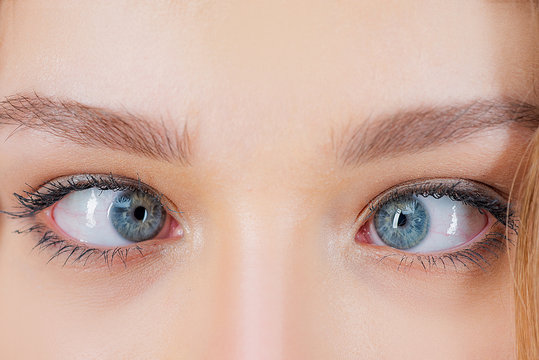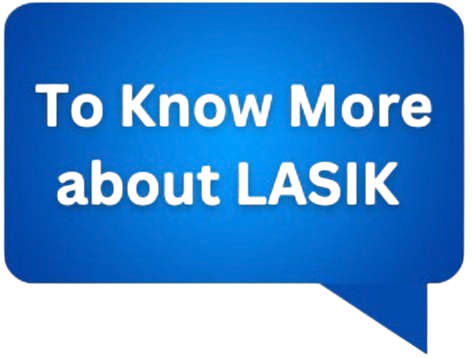
What is the Treatment for Squint Eye? {Detailed Guide}
Sep 6, 2025
A squint, also known as strabismus, is a condition where the eyes do not align properly and point in different directions. While one eye may focus straight ahead, the other may turn inward, outward, upward, or downward. This misalignment can occur constantly or only at certain times, such as when the patient is tired. Squint is common among children but can also appear in adults due to various factors like injury, neurological issues, or untreated childhood squints.
The good news is that modern medicine offers multiple solutions for squint correction. People often ask, “Is there any treatment for squint eyes?” The answer is yes—with timely diagnosis and proper treatment, squint can be corrected effectively, improving both vision and appearance. Seeking expert consultation at a trusted Eye Centre in Delhi ensures access to advanced techniques and experienced doctors who specialize in managing this condition.
What is Squint Eye?
A squint, medically known as strabismus, is a condition where the eyes are not aligned properly. Instead of both eyes focusing in the same direction, one eye may look straight while the other turns inward, outward, upward, or downward. This misalignment can affect vision, depth perception, and in some cases, lead to lazy eye (amblyopia).
Squint can occur all the time or only sometimes, such as when the person is tired or concentrating. Squint eye is seen in both children and adults, but it is more commonly noticed in early childhood.
Types of Squint Eye
There are different types of squint, depending on the direction in which the misaligned eye turns:
-
Esotropia: One eye turns inward toward the nose.
-
Exotropia: One eye turns outward, away from the nose.
-
Hypertropia: One eye turns upward.
-
Hypotropia: One eye turns downward.
-
Intermittent Squint: The eye does not constantly turn but misaligns at certain times.
-
Constant Squint: The eye remains misaligned all the time.
Each type of squint can affect vision differently and requires a customized approach to treatment. At advanced facilities like Vision Eye Centre, specialists conduct a detailed evaluation to determine the exact type of squint before recommending the right therapy or surgery.
Causes of Squint Eye
Squint eye can develop in both children and adults, and the reasons behind it are often linked to how the eye muscles and nerves function. In children, it may be related to eye development issues, while in adults, it may occur suddenly due to injury or health conditions.
Common causes include:
-
Weak or overactive eye muscles – an imbalance in muscle strength leads to misalignment.
-
Refractive errors – conditions like long-sightedness can make the eyes work harder, causing squint.
-
Family history – genetic factors can increase the risk.
-
Eye injuries or trauma – damage to the eye muscles or nerves may cause squint later in life.
-
Neurological problems – stroke, brain injury, or nerve damage can affect eye coordination.
-
Medical conditions – diseases like diabetes, thyroid problems, or hypertension may affect eye movement.
Identifying the exact cause helps doctors recommend the right treatment for squint eye, ranging from glasses to surgery.
Symptoms of Squint Eye
The most obvious sign of a squint is that one eye looks straight while the other turns in a different direction. However, there are also less obvious symptoms that may affect vision and daily life.
Key symptoms include:
-
Visible misalignment of the eyes (inward, outward, upward, or downward).
-
Double vision, especially in adults who suddenly develop squint.
-
Eye strain and headaches after reading or focusing.
-
Difficulty judging distances, which can affect walking or sports.
-
Tilting or turning the head to see clearly (common in children).
-
Development of lazy eye (amblyopia) if squint is left untreated in childhood.
Parents often notice that their child’s eyes don’t move together or that the child blinks or squints often. In such cases, visiting a trusted Eye Hospital in Delhi like Vision Eye Centre is highly recommended for early detection and treatment.
Diagnosis of Squint Eye
When patients or parents ask, “What is the treatment for squint eye?”, the first step is always proper diagnosis. A detailed eye examination helps doctors understand the exact type and cause of squint, which guides the choice of treatment.
Common diagnostic steps include:
-
Visual acuity test: To check how well each eye can see.
-
Refraction test: To find out if glasses are needed due to refractive errors.
-
Eye alignment test: To see how well the eyes work together.
-
Retinal and nerve checks: To rule out neurological problems.
-
Prism testing: To measure the degree and type of squint accurately.
Accurate diagnosis helps doctors decide whether non-surgical methods or surgery are the right treatment for squint eye in each case.
Non-Surgical Treatments for Squint Eye
When people wonder, “Is there any treatment for squint eyes without surgery?”, the answer is yes—many mild to moderate cases respond well to non-surgical options. These treatments are often the first choice, especially in children, and can be very effective when started early.
Non-surgical treatments include:
-
Glasses or lenses: Correct vision problems that may be causing squint.
-
Prism lenses: Help bend light so the eyes align more easily.
-
Orthoptic (eye) exercises: Strengthen weak muscles and improve control.
-
Patching therapy: The stronger eye is covered to force the weaker eye to work harder.
-
Botox injections: Used in selected cases to relax overactive eye muscles temporarily.
Specialists like Dr. Tushar Grover at Vision Eye Centre carefully assess each patient to decide the most effective non-surgical approach. For children, these methods often improve alignment significantly and may even prevent the need for surgery later.
Recovery After Squint Eye Treatment
After surgery, recovery is usually smooth, but proper care is important to get the best results. Patients often ask, “What is the treatment for squint eye recovery like?” The good news is that most people return to normal activities within a week, though complete healing of the eye muscles takes longer.
Key points about recovery:
-
Hospital stay: Most patients go home the same day after surgery.
-
Discomfort: Mild pain, redness, or irritation is normal for the first few days.
-
Eye drops: Antibiotic and anti-inflammatory drops are prescribed to prevent infection and aid healing.
-
Activities: Avoid swimming, heavy exercise, or rubbing the eyes for at least 2 weeks.
-
Follow-up: Regular check-ups are necessary to ensure the eyes remain aligned and healing is on track.
Benefits of Early Treatment
When parents notice signs of squint in their child, they often wonder, “Is there any treatment for squint eyes that should start early?” The answer is yes—early treatment is always more effective. Children’s eyes are still developing, which makes them more responsive to corrective therapies.
Advantages of early treatment:
-
Better vision outcomes: Early correction reduces the risk of amblyopia (lazy eye).
-
Improved eye coordination: Children learn to use both eyes together, improving depth perception.
-
Less psychological impact: Squint can affect a child’s confidence; early treatment helps prevent this.
-
Lower need for surgery: Many mild cases respond well to glasses, patching, or exercises if started early.
-
Long-term success: Early diagnosis at centers like Vision Eye Centre ensures a higher chance of permanent correction.
Thus, timely Squint Eye treatment in Delhi not only improves vision but also boosts confidence and quality of life.
Complications if Squint Eye is Left Untreated
Many people ignore squint eye, thinking it is only a cosmetic issue, but in reality, untreated squint can cause serious long-term problems. When parents ask, “What is the treatment for squint eye if we delay it?”, doctors explain that delaying treatment can reduce the chances of full recovery.
Possible complications include:
-
Amblyopia (lazy eye): The brain ignores input from the weaker eye, leading to permanent vision loss.
-
Poor depth perception: Difficulty in judging distances, which affects daily activities like walking, driving, or sports.
-
Double vision: Especially in adults, untreated squint may cause overlapping or blurred vision.
-
Eye strain and headaches: Constant effort to focus leads to discomfort and reduced productivity.
-
Emotional and social issues: Squint can lower confidence, especially in children, leading to self-esteem problems.
Thus, early consultation at a reputed Eye Centre in Delhi is crucial to avoid these complications and ensure healthy vision.
Conclusion
Squint eye is more than just a cosmetic issue—it affects vision, coordination, and overall confidence. Fortunately, modern medicine offers effective solutions, whether through glasses, exercises, or surgery. For parents and adults wondering, “Is there any treatment for squint eyes?”, the answer is a definite yes. The key is early diagnosis and timely intervention.
For those seeking advanced care, Squint Eye treatment in Delhi at Vision Eye Centre provides world-class facilities, experienced specialists, and proven results. From children with early squints to adults with long-standing conditions, patients receive personalized treatment plans that restore both function and appearance.
Frequently Asked Questions
Q1. What is the treatment for squint eye in children?
In children, the treatment often includes glasses, patching therapy, and eye exercises to strengthen the weaker eye.
Q2. Is there any treatment for squint eyes in adults?
Yes, adults can also be treated effectively. Options include glasses, prism lenses, or surgery to realign the eye muscles. In some cases, Botox injections are used to temporarily relax overactive muscles and improve alignment.
Q3. How successful is squint eye surgery?
Squint surgery has a very high success rate when performed by experienced specialists. It not only aligns the eyes but can also improve visual function, making it both a cosmetic and functional solution.
Q4. How long does recovery take after squint surgery?
Recovery after surgery is usually quick. Most patients return to normal daily activities within a week, though complete healing of the muscles may take a few months.
Q5. Can squint eye come back after treatment?
In some cases, particularly if the squint has been left untreated for many years, there may be a chance of recurrence. However, with timely diagnosis and proper treatment, the risk of squint returning is greatly reduced.

